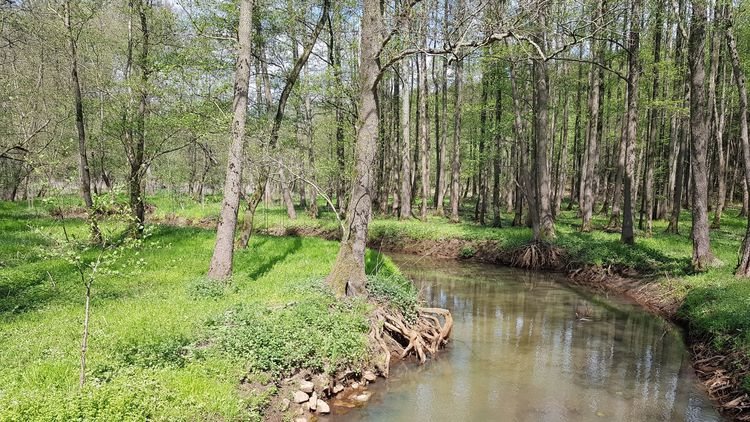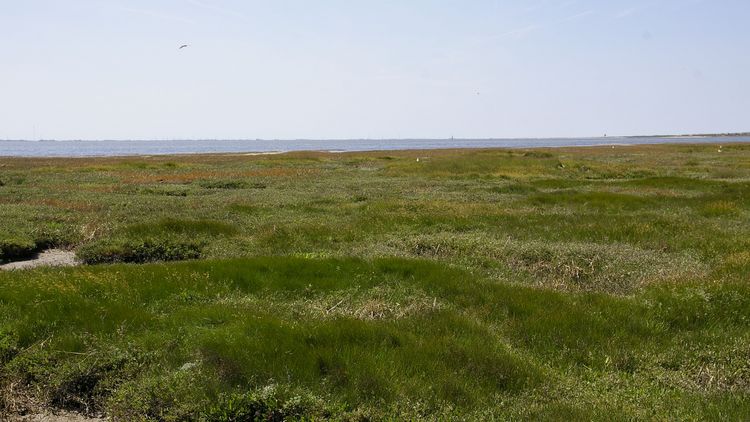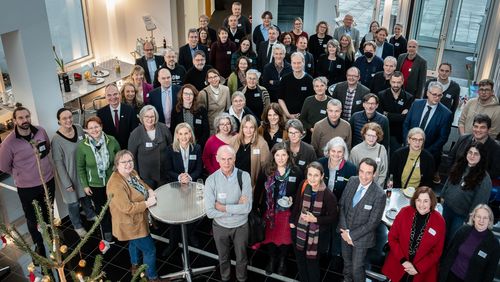Are tipping points suitable concepts for developing environmental policies? Probably not, as even small environmental changes can have major consequences, a research team led by the biodiversity expert Helmut Hillebrand reports in the journal Nature Ecology and Evolution.
Many policies tackling the consequences of global environmental change rely on the concept of tipping points: If an impact, such as biodiversity loss, becomes too large, an ecosystem might flip into a different often less desirable state. This suggests that environmental pressures should remain below a certain threshold to keep the ecosystem in a safe operating space. An international team of scientists led by the biodiversity expert Prof. Dr. Helmut Hillebrand of the University of Oldenburg, Germany, is now questioning whether this concept is suited for developing environmental policies. Using detailed statistical analyses of published results from more than 4,600 field experiments, the scientists found little evidence for thresholds. When focussing on tipping points, scientists and policy makers may thus risk overlooking the negative impact of gradual changes on ecosystems – with potentially disastrous consequences. The analysis has been published in the Journal Nature Ecology and Evolution.
When coral reefs are overgrown by algae
Over the past years, many ecological case studies have been published that indicate the tipping behaviour of ecosystems. For example, coral reefs may switch into an algae-dominated stage if eutrophication is large enough to reduce the proportion of corals. This is why policy makers increasingly rely on thresholds to draft strategies for sustainably safeguarding ecosystems. “However, if such thresholds are to become the standard tool to assess global change, we should be able to show at which levels such thresholds might be”, says Hillebrand, director at the Helmholtz-Institute for Functional Marine Biodiversity at the University of Oldenburg.
The biodiversity expert and his co-workers therefore wanted to find out whether threshold levels can be identified from available environmental data at all or, even better, whether they can be predicted for different drivers of environmental change. “In order to develop environmental policies we need a general guideline”, Hillebrand points out. “But the problem is, that thresholds might be hard to detect in natural ecosystems when the anthropogenic change hasn’t been large enough yet. And we can’t determine thresholds for each process in each ecosystem.”
How long can ecosystems fulfil their functions?
To get a better overview of how ecosystems respond to change, the scientists turned to experimental data derived from already published synthesis efforts – so-called meta-analyses. “This is a statistical method ecologists apply to summarise the general outcome of many field experiments”, explains Hillebrand, who is an expert in such synthesis efforts. In particular, the analyses look at the consequences of present-day but also future pressures, such as increased CO2 or nutrient levels. They also asses the functional responses of the ecosystems, such as changes in the cycling of elements or the production of biomass.
In total the authors used information from 36 meta-analyses, which cover 4601 unique field experiments on natural or close-to-natural ecological communities. This is the largest effort ever synthesising scientific literature on global change, according to the authors. Each experiment was characterised by a certain amount of pressure that resulted in a specific response of the ecological communities to this change. Based on this the authors calculated the so-called effect size, that is how strongly a system responds. The researchers then devised statistical tools that allowed them to test whether the magnitude of response related to the strength of pressure. If this was the case, they investigated whether there was a certain amount of pressure where extraordinarily strong responses started to occur. “This change in the response would then indicate the presence of thresholds”, explains co-author Dr. Jan Freund, modelling expert at the Institute for Chemistry and Biology of the Marine Environment at the University of Oldenburg.
No threshold values detectable
“The results of this analysis were stunning”, Hillebrand says. Whereas the vast majority of the 36 meta-analyses found that the strength of pressure affected the response magnitude, only very few (3 out of 36) showed statistical evidence for threshold transgression. However, the fact that thresholds did not emerge could still mean two things, Hillebrand points out: “The thresholds are either truly absent or they exist but they remain undetectable by our statistical approach”.
To elucidate this question, Julian Merder – a PhD student joining the project – simulated different forms of responses to global change, either with or without the presence of a threshold. When there was little statistical noise in the simulated data sets, the scientists were able to distinguish between cases with and without thresholds. “However, as soon as we introduced only moderate statistical noise, the thresholds become undetectable”, Merder points out. The statistical noise mimicked situations in the actual data, for examples different magnitudes of pressure needed for threshold transgression or different response magnitudes around the threshold.
Acting in line with the precautionary principle
According to lead author Hillebrand, this result has major implications: “If scientists cannot measure how close a certain ecosystem is to a threshold inducing a tipping point, how useful can then a regulation or policy be relying on such a threshold?”, he asks. Co-author Dr. Ian Donohue, ecologist at Trinity College Dublin (Ireland) adds: “I think we need to abandon the idea of safe operating spaces. It gives the completely erroneous impressions that small pressures do not affect ecosystems at all”. Rather, the statistical analysis of the data would demonstrate that responses to even the smallest change can be large. “If we wait to see clear tipping points in response to any of the major human-induced environmental changes such as warming or biodiversity change, we risk overlooking the small gradual changes which sum up to a shifting baseline over time, that is a shift in the perception of what a healthy ecosystem looks like”, Hillebrand adds. In his view, scientists and policy makers should therefore rather focus on the size and lifetime of random fluctuations and their possible consequences to be able to act according to the precautionary principle.







